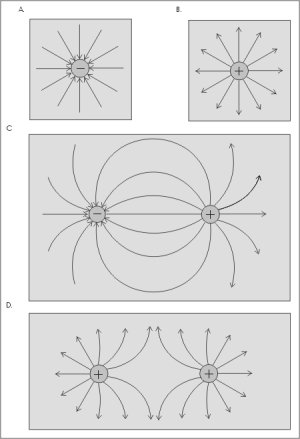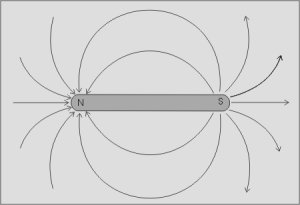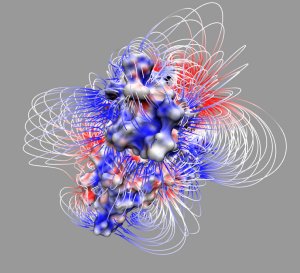It looks like you're using an Ad Blocker.
Please white-list or disable AboveTopSecret.com in your ad-blocking tool.
Thank you.
Some features of ATS will be disabled while you continue to use an ad-blocker.
share:
reply to post by SoulVisions
I stumbled across it about a month ago while looking at the "matter is composed of light thing". Several pages there if you didn't scroll up and notice.
I stumbled across it about a month ago while looking at the "matter is composed of light thing". Several pages there if you didn't scroll up and notice.
Maybe if you said knitting needle people would know what you're talking about.
Originally posted by XLR8R
reply to post by Aliensun
Well, Einstein did say that electricity and magnetism are one of the same just in different forms. So if gravity is somewhat related to magnetism then I gues that, indeed, the universe is electric. Which would explain Tesla's success with his experiments in free energy. It' a shame we never had the chance to see those two work together.
Did somebody say Magnetricity? Not saying Leedskalnin was right or wrong but Coral Castle isn't made of foam.
That guy knew something.
reply to post by DenyObfuscation
Yup. He knew how levers and pulleys work.
Like this guy.
www.youtube.com...
Yup. He knew how levers and pulleys work.
Like this guy.
www.youtube.com...
reply to post by DenyObfuscation
DenyObfuscation, Coral castle is the perfect example to show our current way of thinking is skewed in some way. He must of documented how he did it. It can't be otherwise...I would have.
You're gonna get me on the coral wagon again....ah well.
DenyObfuscation, Coral castle is the perfect example to show our current way of thinking is skewed in some way. He must of documented how he did it. It can't be otherwise...I would have.
You're gonna get me on the coral wagon again....ah well.
Originally posted by Phage
reply to post by DenyObfuscation
Yup. He knew how levers and pulleys work.
Like this guy.
www.youtube.com...
actually that guy says himself in the vid that he doesn't use pulleys, just levers, fulcrums & good ol' sweat-on-the-brow
pretty resourceful little fella, he is
reply to post by Phage
That certainly is a possibility. Either way, I'm curious to know how. Anti-Gravity is "cooler" and would be more useful but remarkable either way.
ETA: As you pointed out this vid is not in 0 G. I haven't found a decent description of free fall as it applies in ISS, only in G Force 1.
That certainly is a possibility. Either way, I'm curious to know how. Anti-Gravity is "cooler" and would be more useful but remarkable either way.
ETA: As you pointed out this vid is not in 0 G. I haven't found a decent description of free fall as it applies in ISS, only in G Force 1.
edit
on 7-2-2012 by DenyObfuscation because: ETA
reply to post by metalshredmetal
Right. But Leedskalnin used both.
www.crystalinks.com...
Right. But Leedskalnin used both.
www.crystalinks.com...
edit on 2/7/2012 by Phage because: (no reason given)
I'd like to see this trick done with a doornob or some brass nuckles, and maybe a nife.
reply to post by Phage
I thought Leedskalnin used more than just pulleys and levers. Hence the reason he wrote a book about what he did there called "Magnetic-Current?
Oh and maybe some acoustical levitation techniques?
I thought Leedskalnin used more than just pulleys and levers. Hence the reason he wrote a book about what he did there called "Magnetic-Current?
Oh and maybe some acoustical levitation techniques?
Very cool, I would hate to have to calculate all the forces at work over time.
This phenomenon is called the Triboelectric effect
The field lines around these charged objects look like this:

Since he said the water was positively charged, then a) would be the needle and b) the water drops. Their interaction is shown by c). They are attracted, but this diagram doesn't show the velocity effects of the water drop.
Figure d) shows what would happen if the had the same charge, i.e. two identical and charged needles would repel each other.
It is interesting to note how similar the electrostatic effects in c) above is similar to a magnet's field lines:

www.knowledgetreeproject.org...
Of course we all know about how electrostatic charges effect us in the real world. When walking across a carpet we build up a charge and touching something with no charge can cause sparks to fly.
Most of us have seen the hair raising spectacle at science museums, which use Van de Graaff generators some of which use the the triboelectric effect.

Electrostatic charges play a much more important role on the small scale, especially when atoms and molecules interact. The electrostatic fields on this molecule are just ready for action:

Of course, their can be dangers as well. Aircraft can build up static charges through friction as they fly through the air, potentially damaging unshielded electronics. Computer technicians often wear anti-static bracelets to avoid frying computer chips. And then there was the strange case of:
Apparently he built up 40,000 volts of static electricity just because of the clothes he was wearing and by walking across a carpet. I wonder if he got the job?
news.bbc.co.uk...
This phenomenon is called the Triboelectric effect
The triboelectric effect (also known as triboelectric charging) is a type of contact electrification in which certain materials become electrically charged after they come into contact with another different material and are then separated (such as through rubbing).
The field lines around these charged objects look like this:

Since he said the water was positively charged, then a) would be the needle and b) the water drops. Their interaction is shown by c). They are attracted, but this diagram doesn't show the velocity effects of the water drop.
Figure d) shows what would happen if the had the same charge, i.e. two identical and charged needles would repel each other.
It is interesting to note how similar the electrostatic effects in c) above is similar to a magnet's field lines:

www.knowledgetreeproject.org...
Of course we all know about how electrostatic charges effect us in the real world. When walking across a carpet we build up a charge and touching something with no charge can cause sparks to fly.
Most of us have seen the hair raising spectacle at science museums, which use Van de Graaff generators some of which use the the triboelectric effect.

Electrostatic charges play a much more important role on the small scale, especially when atoms and molecules interact. The electrostatic fields on this molecule are just ready for action:

Of course, their can be dangers as well. Aircraft can build up static charges through friction as they fly through the air, potentially damaging unshielded electronics. Computer technicians often wear anti-static bracelets to avoid frying computer chips. And then there was the strange case of:
An Australian man built up so much static electricity in his clothes as he walked that he burned carpets, melted plastic and sparked a mass evacuation.
Apparently he built up 40,000 volts of static electricity just because of the clothes he was wearing and by walking across a carpet. I wonder if he got the job?
news.bbc.co.uk...
SIMPLY AWESOME.
Thanks for the vid and info.
Could this explain The Van Allen radiation belt? Seeing as they mentioned charged particles orbiting a negative charge. Very cool S&F
Thanks for the vid and info.
Could this explain The Van Allen radiation belt? Seeing as they mentioned charged particles orbiting a negative charge. Very cool S&F
reply to post by TiM3LoRd
The Van Allen belts are caused by charged particles being captured by Earth's magnetic field.
Different.
The Van Allen belts are caused by charged particles being captured by Earth's magnetic field.
Different.
reply to post by Phage
how is "it" "different"? what's the difference of observation between your definition of the van allen belts and the one posited by "timelord"s?
aren't the objects "captured" by the "belts" "charged"? could you explain them in a way in which EM phenomena cannot explain?
how is "it" "different"? what's the difference of observation between your definition of the van allen belts and the one posited by "timelord"s?
aren't the objects "captured" by the "belts" "charged"? could you explain them in a way in which EM phenomena cannot explain?
edit on 2/7/12 by
metalshredmetal because: (no reason given)
reply to post by metalshredmetal
It's not my definition of the Van Allen belts, it's Dr. Van Allen's definition.
The Van Allen belts do involve an electromagnetic phenomenon in the sense that they do do involve electrical charges and magnetism.
The difference from what is seen in the video is that the water droplets "orbit" the teflon rod because of the electrostatic attraction between them, there is no magnetic effect it is strictly an interaction between electrostatic fields, not an "electromagnetic" phenomenon.
The particles which make up the Van Allen belts don't orbit anything and they are held by Earth's magnetic field, not electrostatic forces.
It's not my definition of the Van Allen belts, it's Dr. Van Allen's definition.
The Van Allen belts do involve an electromagnetic phenomenon in the sense that they do do involve electrical charges and magnetism.
The difference from what is seen in the video is that the water droplets "orbit" the teflon rod because of the electrostatic attraction between them, there is no magnetic effect it is strictly an interaction between electrostatic fields, not an "electromagnetic" phenomenon.
The particles which make up the Van Allen belts don't orbit anything and they are held by Earth's magnetic field, not electrostatic forces.
Really cool stuff to look at.
I didn't realize that electrostatics could create an orbit -- but it makes sense once you see it.
I wonder what the difference is between the velocity/vector required to keep the orbit compared to that of gravity.
You'll notice that it speeds up when it gets close to the rod -- and that's the same with gravity.
>> I don't know if this would work in a vacuum however -- does it require Air for the charge to attract -- anyone know?
I didn't realize that electrostatics could create an orbit -- but it makes sense once you see it.
I wonder what the difference is between the velocity/vector required to keep the orbit compared to that of gravity.
You'll notice that it speeds up when it gets close to the rod -- and that's the same with gravity.
>> I don't know if this would work in a vacuum however -- does it require Air for the charge to attract -- anyone know?
reply to post by XPLodER
To be truthful, Gravity isn't a push or pull force, it's an electromagnetic force.
This water drop circling around a needle, it says that the water has a certain charge and the needle has a certain charge as well to keep the water drop
Neat stuff. Keep up the good work.
To be truthful, Gravity isn't a push or pull force, it's an electromagnetic force.
This water drop circling around a needle, it says that the water has a certain charge and the needle has a certain charge as well to keep the water drop
Neat stuff. Keep up the good work.
reply to post by XPLodER
This video brought back fond memories of science class (the only class worth staying awake for).
I had a teacher for freshmen science who would show us a different odd/weird/awesome thing each day.
I had him again junior year for Earth/Space science, he showed us some amazing things.
This video is probably going to used by him at some point
I'm yappin' to much.
Thanks for the post.
This video brought back fond memories of science class (the only class worth staying awake for).
I had a teacher for freshmen science who would show us a different odd/weird/awesome thing each day.
I had him again junior year for Earth/Space science, he showed us some amazing things.
This video is probably going to used by him at some point
I'm yappin' to much.
Thanks for the post.
reply to post by Nicolas Flamel
You could actually make the same demonstration with magnetic monopoles where a south pole would orbit a north pole. Unfortunately no magnetic monopoles have been observed yet.
To calculate the forces on a two objects system is rather simple, the formulation is the same for all point sources in three dimensional space: Force = constant * charge a * charge b / distance squared.
The obvious difference between magnetic, electric and gravitational forces is that for the former two the direction of the force(attractive, repulsive) depends on the signs of the charges(plus, minus, north, south).
It is interesting to note how similar the electrostatic effects in c) above is similar to a magnet's field lines
You could actually make the same demonstration with magnetic monopoles where a south pole would orbit a north pole. Unfortunately no magnetic monopoles have been observed yet.
To calculate the forces on a two objects system is rather simple, the formulation is the same for all point sources in three dimensional space: Force = constant * charge a * charge b / distance squared.
The obvious difference between magnetic, electric and gravitational forces is that for the former two the direction of the force(attractive, repulsive) depends on the signs of the charges(plus, minus, north, south).
new topics
-
Any one suspicious of fever promotions events, card only.
The Gray Area: 2 minutes ago -
God's Righteousness is Greater than Our Wrath
Religion, Faith, And Theology: 4 hours ago -
Electrical tricks for saving money
Education and Media: 7 hours ago -
VP's Secret Service agent brawls with other agents at Andrews
Mainstream News: 8 hours ago -
Sunak spinning the sickness figures
Other Current Events: 9 hours ago -
Nearly 70% Of Americans Want Talks To End War In Ukraine
Political Issues: 9 hours ago -
Late Night with the Devil - a really good unusual modern horror film.
Movies: 11 hours ago
top topics
-
VP's Secret Service agent brawls with other agents at Andrews
Mainstream News: 8 hours ago, 9 flags -
Cats Used as Live Bait to Train Ferocious Pitbulls in Illegal NYC Dogfighting
Social Issues and Civil Unrest: 12 hours ago, 8 flags -
Electrical tricks for saving money
Education and Media: 7 hours ago, 4 flags -
HORRIBLE !! Russian Soldier Drinking Own Urine To Survive In Battle
World War Three: 17 hours ago, 3 flags -
Sunak spinning the sickness figures
Other Current Events: 9 hours ago, 3 flags -
Nearly 70% Of Americans Want Talks To End War In Ukraine
Political Issues: 9 hours ago, 3 flags -
Late Night with the Devil - a really good unusual modern horror film.
Movies: 11 hours ago, 2 flags -
The Good News According to Jesus - Episode 1
Religion, Faith, And Theology: 14 hours ago, 1 flags -
God's Righteousness is Greater than Our Wrath
Religion, Faith, And Theology: 4 hours ago, 0 flags -
Any one suspicious of fever promotions events, card only.
The Gray Area: 2 minutes ago, 0 flags
active topics
-
Any one suspicious of fever promotions events, card only.
The Gray Area • 0 • : Cavemannick -
SETI chief says US has no evidence for alien technology. 'And we never have'
Aliens and UFOs • 46 • : yuppa -
God's Righteousness is Greater than Our Wrath
Religion, Faith, And Theology • 1 • : andy06shake -
Sunak spinning the sickness figures
Other Current Events • 7 • : xWorldxGonexMadx -
HORRIBLE !! Russian Soldier Drinking Own Urine To Survive In Battle
World War Three • 33 • : Degradation33 -
How ageing is" immune deficiency"
Medical Issues & Conspiracies • 34 • : angelchemuel -
Nearly 70% Of Americans Want Talks To End War In Ukraine
Political Issues • 13 • : Freeborn -
Mood Music Part VI
Music • 3101 • : ThatSmellsStrange -
VP's Secret Service agent brawls with other agents at Andrews
Mainstream News • 41 • : ThatSmellsStrange -
New whistleblower Jason Sands speaks on Twitter Spaces last night.
Aliens and UFOs • 55 • : baablacksheep1
